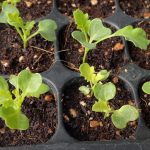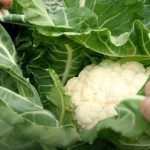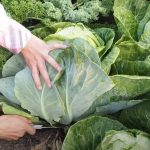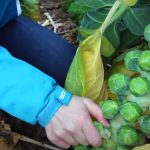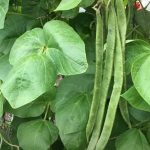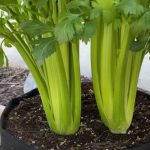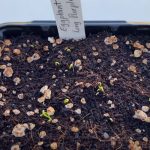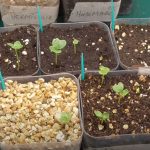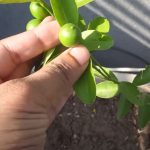Do you know onions take about 100 days to grow from a tiny seed to a delicious tennis-ball-size bulb? Learn the ways and tricks of growing onions from seed right here! I have harvested many onions from seeds and bulbs (or sets), and many factors affect the resulting yield: sowing season, access to sunlight, water, compost and fertilizer, and so many more.
If you want to successfully grow your own onions in your garden bed for some delicious French onion soups or cheesy onion chicken, don’t miss all the tips I have in store for you!
Overview
Level of difficulty: ✨ Very easy ✨
Season: Most onion hybrids produce the best yield if grown in early spring (March and April) and harvested in late summer through fall (July to October). Some cultivars less prone to cold damage can be sowed from late October to March.
Nutrition: Onions contain high quercetin, a natural component commonly used in preventing cancer. The vegetable also boasts many vitamins like vitamin C, B6, B9, and potassium. Consuming onions brings about many health benefits, like improving the digestive system, containing blood sugar, fighting inflammation, reducing cholesterols, and keeping cancers at bay.

Height: 10-30 inches
How long do onions take to grow from seed?:90-120 days until harvest
Tips For Choosing Onion Cultivars And Where To Buy
Growing onions is the same as with most other vegetables. There is no need to be picky about the source of the cultivars or the cultivars themselves as long as you buy the bulbs fresh and from a reliable market/food store.
If you prefer choosing a particular cultivar to purchase a random bag of onions in the supermarket, try these cultivars:
- Yellow Sweet Spanish (long-day): Gargantuan onion hybrid with delicious white fleshy leaves.
- Walla Walla onion (long-day): Commonly grown in the Walla Walla Valley of Washington, this yellow onion produces a mild flavor raw and sweeter when cooked.
- Red Grano (short-day): Medium-sized red onions with a slightly sweet and mild flavor. Throw some in your guacamole or burger for a kick!
- White Bermuda (short-day): Small-sized bulbs with milk flavor, perfect for soup, sandwiches, or stuffing.
- Candy (mid-day): Sweet, pungent, and sharp flavor. When cooked, candy onions tasted sweet and savory.

Check out these seed stores where you can purchase healthy onion seeds:
Preparation
In case you are growing onions outdoor:
Since growing onions should be strictly outdoor for more developed bulb sizes, I recommend preparing tools and containers that are adapted for outdoor gardening.
- Loamy soil
- Compost
- High-nitrogen fertilizer: 10-10-10 and 20-0-0
- Raised garden bed or large cell flats with good separation to grow large onions without having to repot
- Trowel and other gardening tools if needed
In case you are growing onions indoors, here is my take:
Can you start onions indoors? Growing onions inside your home without scheduled and frequent access to sunlight should be for harvesting scallions or green onions only (the leaf part), not for the bulbs. Onions love bathing in sunlight for hours and hours, so growing them indoors will surely stunt the bulb’s growth.
With that said, to harvest the leaves, you only need to prepare some simple tools and containers:
- Tall and sturdy clear plastic cups that don’t tip over easily, one cup per onion bulb/ set
- Toothpicks to hold the onions if they are smaller than the cups’ mouths. If the onions are bigger than the mouths of the cups, toothpicks aren’t needed.
Fill the cups with water, cut the bulb apex, and submerge the roots in water. Scallions will start growing from the cut, and you can harvest new leaves repeatedly after cutting the previous ones.

Growing Onions From Seed Outdoor Step-By-Step
From germination to harvest, check out how easy growing onions from seed is and replicate the steps yourself!
Germination
The best way to germinate onions seed is to sow them directly into the soil.
Why don’t I suggest germinating them in paper towels like most of the time? It’s because, despite their jumbo size when harvested, onion seeds are very small. Thus their seedlings are incredibly fragile for transplanting. An extra repotting step will put them through tremendous stress, and there is no guarantee that we don’t break the roots or the cotyledons in the process.
To germinate onion seeds, follow these steps:
- Step 1: Prepare a batch of sandy-loamy or silt-loamy and lightweight soil in a large garden bed, topped with composts like rotten manure, to provide moderate nitrogen to onions without the risk of burning the seeds. You can use regular soil-base blends instead of seed-starting mixes.
- Step 2: Sprinkle the seeds on top of the soil. You don’t have to care too much about adjusting the population density at the moment, but make sure that the seeds don’t lie on top of each other. Then, top the seeds with a thin layer of soil and water it so that the soil sections merge and don’t overwater. The seeds should be 0.25 – 0.5 inches under the surface.
- Step 3: Water the seeds whenever the soil’s surface is dry to the touch, as it is the most important factor in triggering imbibition and germination for onion seeds. Wait until the cotyledons grow, and you know which onion seeds have successful germination.

Seedling
- Step 1: If you want to grow large onion bulbs, wait for the seedlings to develop and then remove them from the soil when they sprout 1-2 true leaves (about 20-30 days post-germination) without damaging the roots.
- Step 2: Then, distribute each plant about 3-4 inches away from each other in rows, with the rows being 12-15 inches apart, so that the bulbs have enough space to expand.
- Step 3: You can start with the fertilizer 30 days after the seeds germinate. Take some 10-10-10 granular fertilizer and sprinkle it around the onions in a minimal amount to promote root growth, and water to dissolve it. One small cup can provide enough nutrients for a 20ft row of onions. Fertilize once every 2-3 weeks.
- Step 4: When you reach the 60-day milestone, switch to 20-0-0 fertilizer. This will help the bulbs grow to their utmost potential.
Of course, the scallions are the first things to develop from the seedlings. They already start photosynthesis, and the scallions will keep growing higher toward the sun until the tips become yellow and collapse. You can cut them at an early age for consumption or to promote bulb growth. Fewer leaves mean more nutrients going into the fleshy leaves.
Adult plant
Onions reach their initial adult stage about 80-90 days after being sowed into the ground. The bulb starts to grow at this stage, but the size is still very small (1-2 inches). Keep up with the 20-0-0 fertilizer to help the bulbs grow.
If avid gardeners use bulbs instead of seeds to grow onions, the process takes much less time, maybe 60 days for the adult stage to arrive and only about 20 days more until the harvest months.
Harvest
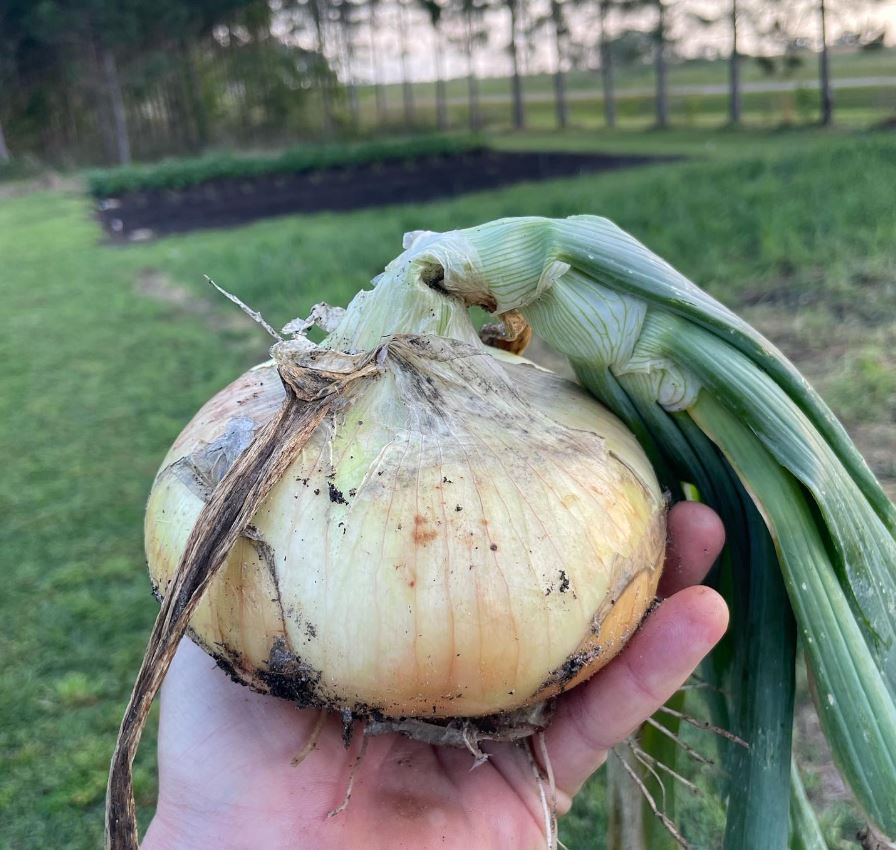
What are the signs that tell you it’s time to harvest onions?
- If you grow onion from seed, prepare for harvesting after 90-100 days, counting from when you sow seeds. The cultivars and living conditions may affect the harvesting time. Expect to wait up to 120-130 days to harvest the aromatic vegetables.
- If the long leaves begin to have a yellow color and fall over to the side in a natural way, it means that the onions are ripening and are almost ready for harvest.
- If the color of the peels has darkened, but the leaves haven’t fallen to the side and slightly dry up yet, the bulbs still need to fully mature, and the flavor has yet to develop ideally.
- Loosen the dirt around the bulbs and pull the onions when the tunic is brown and the signs abovementioned appear.
- Cut a part of the root and the leaves for easier storage. You can hang the onions in the wind for the peels to dry or leave them on the ground, where they grow up for a few days or a week. Cover them to keep water from making the onions rot.
How To Care For Onions: 5 Key Elements
There are 5 factors that hugely affect the growth of onions: light, temperature, humidity, oxygen, and diseases. Learn the favorable conditions to grow your batch of onions now!

Light
Onions typically need a lot of sunlight to thrive, and there are various classifications to consider.
- Short-day varieties: 10-12 hours of direct sunlight daily
- Mid-day varieties: 12-14 hours of direct sunlight daily
- Long-day varieties: over 14 hours of direct sunlight every day
Since they are so energetic for photosynthesis, I suggest planting them in an open garden instead of indoors. Of course, it’s a bit complicated if you live in a rainy area. If the rainfalls are frequent and the ground doesn’t have enough time to dry, your onions will likely rot. Thus, providing shade during rains is a must!
Temperature
Onions prefer cool weather but not too frosty (as low as 20oF). With a consistent temperature between 60-80oF, they will thrive the best, and there won’t show any signs of dormancy during the germination period.
Humidity
Without counting rainfalls, it’s best to water onions once or twice a week whenever the soil’s surface seems slightly dry. Since the root system of onions is shallow, waiting until the surface completely dries for the next watering isn’t smart as it causes drought stress. With that said, overwatering must be avoided because onions rot rather easily. That’s why we need a well-drained system!
Oxygen
During the germination period, it’s vital to provide onion seeds with enough oxygen for them to break the seed coats and grow strong enough to extend past the soil. That’s why it’s important to add compost so the soil isn’t too compact.
Diseases
To avoid diseases, it’s recommended to spray the onions with fungicide every 7-10 days. Even if you don’t notice any sign of fungi or bugs, the solution will keep the threats at bay without harming human consumption.
3 Tips For Sowing Onions
There are some tips I have picked up along the way when growing onions from seed. Check them out to ensure you avoid making the same mistake I made.
Use raised garden beds to grow onions to avoid back pain
Growing onions from seed requires frequent care and observation just like many other vegetables. And since the onions grow underground, greenies may have to double down frequently to check their condition and provide the necessary care. Using a raised garden bed will avoid severe back pain after each gardening day.

Don’t add fertilizer to young onion seedlings to avoid stunted bulb growth
Yes, onions need fertilizer to build up the bulbs, but using it too early may cause stunted growth to the bulb while the scallions sprout like there’s no tomorrow. To divert the nutrients to the bulb, start using fertilizer after about 20-30 days when the first true leaves have emerged and grown. The fertilizer will tackle the root system’s growth, which also directly affects the bulb.
Vegetables with consumable bulbs like onions love loamy and well-drained soil
Since the edible bulbs are submerged in the dirt, if we overwater and use compact soil, the onions may rot very quickly due to being in contact with humidity constantly and having to access to oxygen. Make sure you use loamy and well-drained soil for this reason, whether growing onions, shallots, or garlic.
